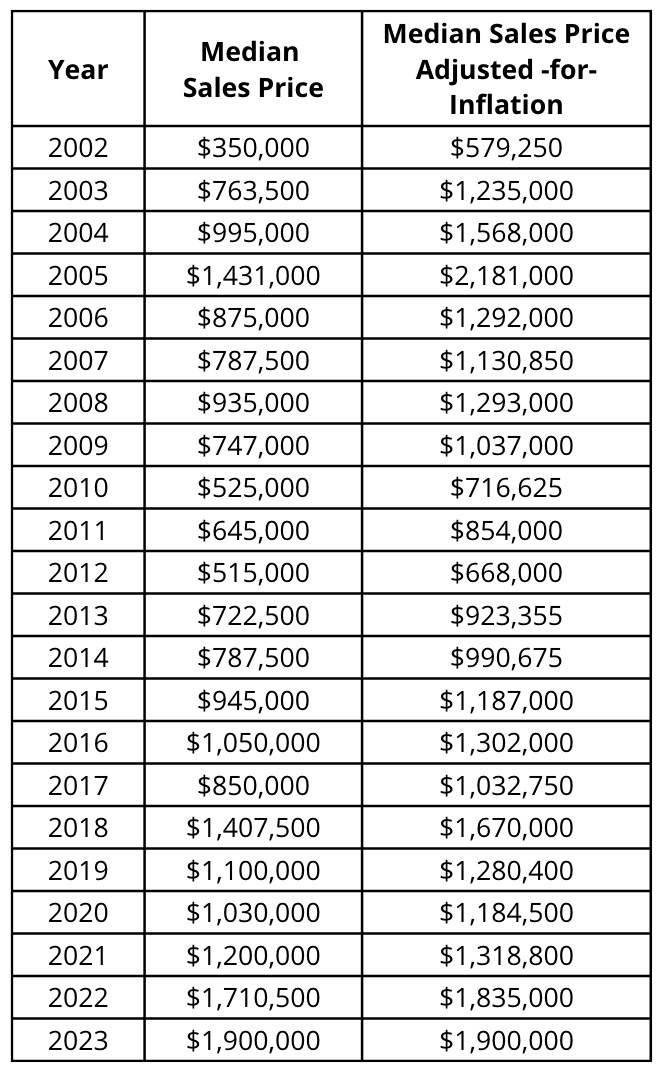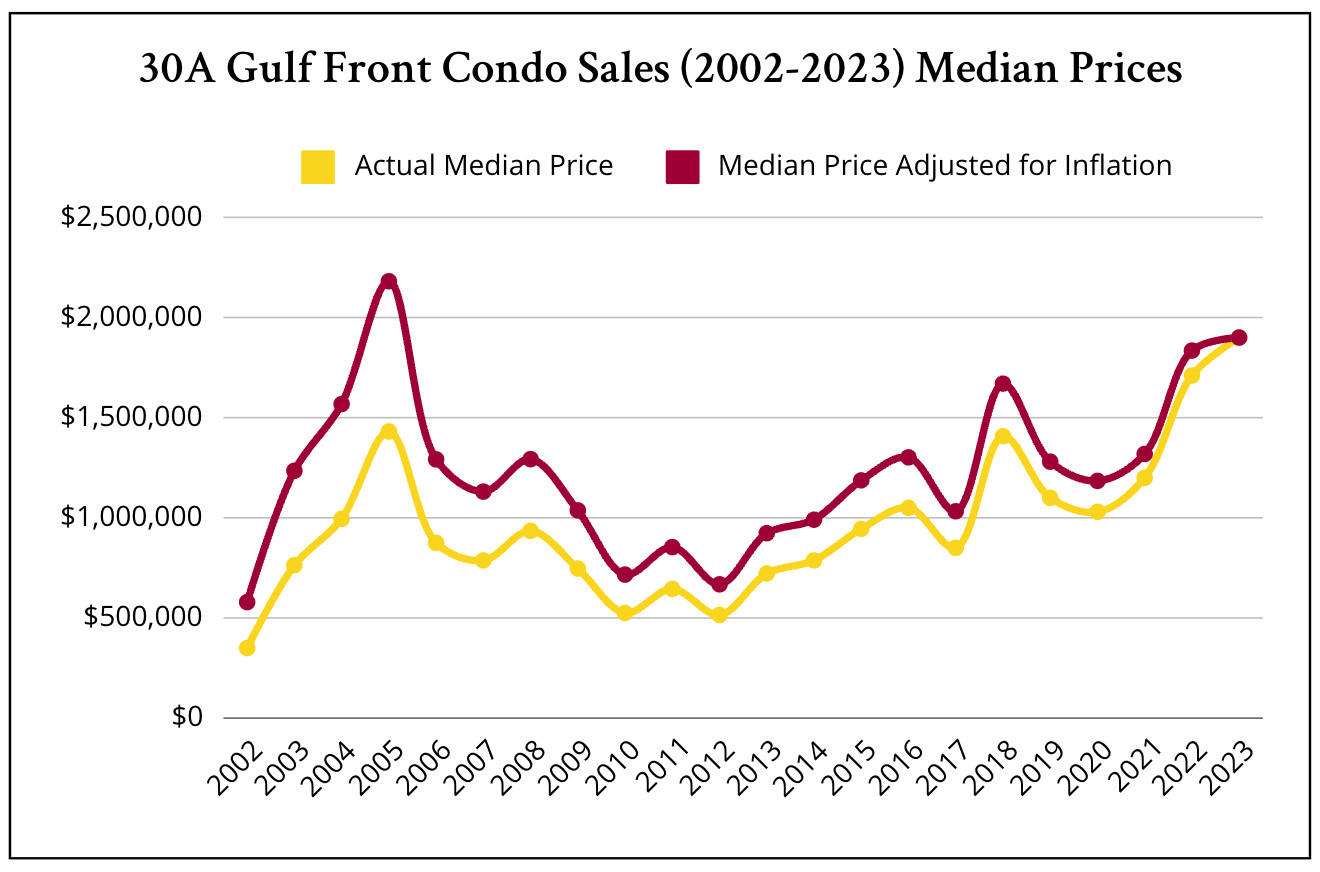This post aims to demonstrate that our current pricing is sustainable and that we do not anticipate a real estate price bubble any time soon. To do so, we have researched the median sales prices of gulf-front condominiums on 30A every year since 2002. Consequently, our scope includes the years preceding the 2005 bubble, the 2005 bubble itself, the years of stalling (when no one exactly knew where the market stood) from 2006 until 2012, the long valley of stabilization from 2012 until 2018, and the recovery experienced since 2018.
When taking a historical perspective, a factor often overlooked is inflation. One dollar in 2002 had the purchasing power of $1.65 today. We have adjusted the median sales price for each year to account for the compounded inflation rate from that year until now. Since 2002, the compounded inflation rate has been 1.65. Since 2010, the factor has been 1.36. When applying inflation factors to the ‘actual’ median price, the evolution we see is quite different from the one witnessed when we only look at the ‘actual’ numbers. Yet, we will all agree that comparing the 2002 raw data with 2023’s is equivalent to comparing apples and oranges.
 The double-entry table displays the historical data, ‘raw’ (2nd column) and ‘adjusted-for-inflation’ (3rd column), of the median sales price of gulf-front condos on 30A. The gold curve (on the reverse side) displays the evolution of ‘raw’ values. The garnet curve visualized the same data when adjusted for inflation.
The double-entry table displays the historical data, ‘raw’ (2nd column) and ‘adjusted-for-inflation’ (3rd column), of the median sales price of gulf-front condos on 30A. The gold curve (on the reverse side) displays the evolution of ‘raw’ values. The garnet curve visualized the same data when adjusted for inflation.
There is no need for a long explanation to point out the obvious:
- If looking at the raw non-adjusted data (the gold curve), the 2023 prices ($1,900,000) were almost 33% higher than the peak of 2005 ($1,431,000). This certainly would be substance for concern if we were comparing apples to apples… but we are not.
- The picture becomes quite different when we compare the adjusted-for-inflation data (the garnet curve). 2002 began with a robust and stable market at $579,250. The bubble peaked in 2004 and 2005 with adjusted median sales prices of $1,568,000 and $2,181,000, respectively. The bottom was hit in 2012 with a low of $668,000. Then, in 2018, a stronger upward trend gained momentum, reaching $1,670,000, followed by $1,318,800 in 2021, $1,835,000 in 2022, and $1,900,000 in 2023.
- The garnet curve (adjusted for inflation) indicates that the 2005 peak ($2,181,000) was almost 20% higher than the 2022 market level ($1,835,000).
- In 2005, most buyers were flippers and highly leveraged. Furthermore, the buyers of 2005 belonged to a small pool of investors, primarily from North Florida, Georgia, and Alabama. Many purchases and sales were short-term buy-and-flip transactions.
- Since 2019, driven by the new trends of remote work and immigration from other states, the pool of buyers has become broader and stronger, originating from most of the eastern half of the United States – and a non-negligible share of West Coast ‘ex-pats.’ These buyers favor cash purchases. They also are end-users. The attention given since 2019 to NW Florida by significant investment funds, such as BlackRock, has compounded the demand and improved the buyers’ solvency. The 2023 data confirm this trend: the adjusted median reached $1,900,000 – sustainably higher (48%) than the pre-pandemic level of 2020.
In conclusion, the market has gradually recuperated from the abysses of the 2010-2017 era and stabilized at a price level that we deem reasonable, even affordable, considering the demand. Lower interest rates (around 6%) and the rebirth of the market activity since December 2023 lead us to a strong dose of optimism for 2024. We are a steal compared to other Florida markets such as Tampa Bay, Naples, and South Florida!



